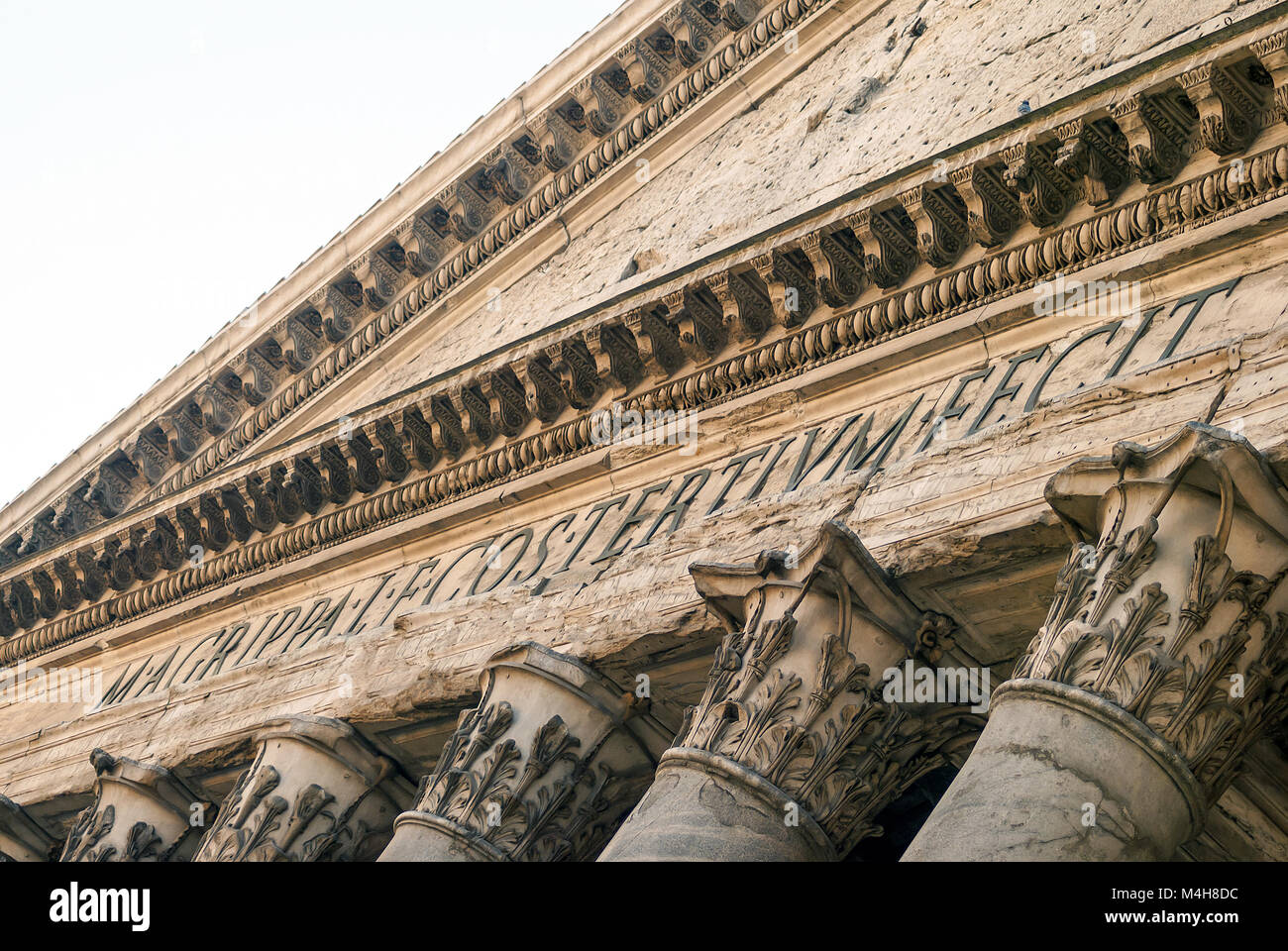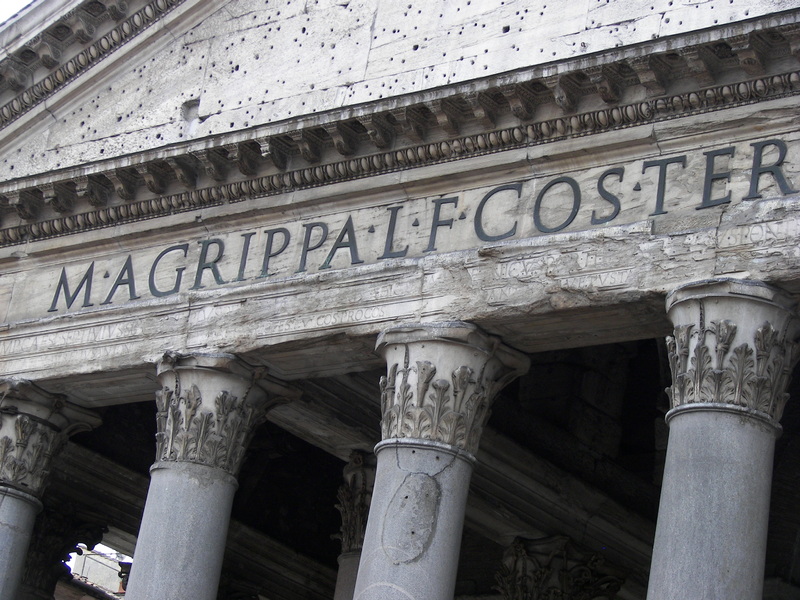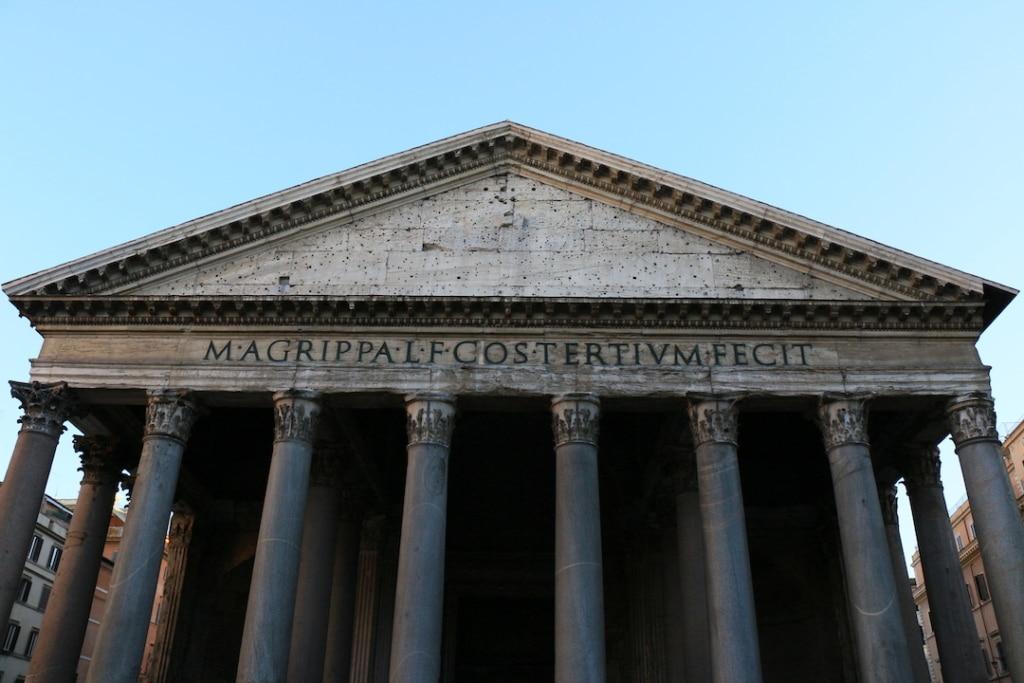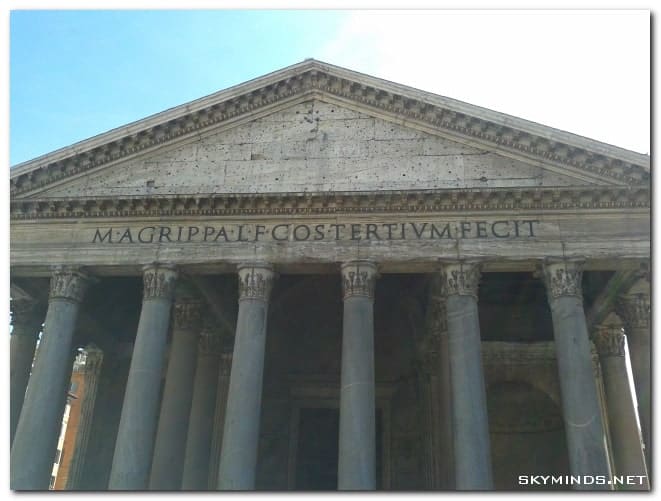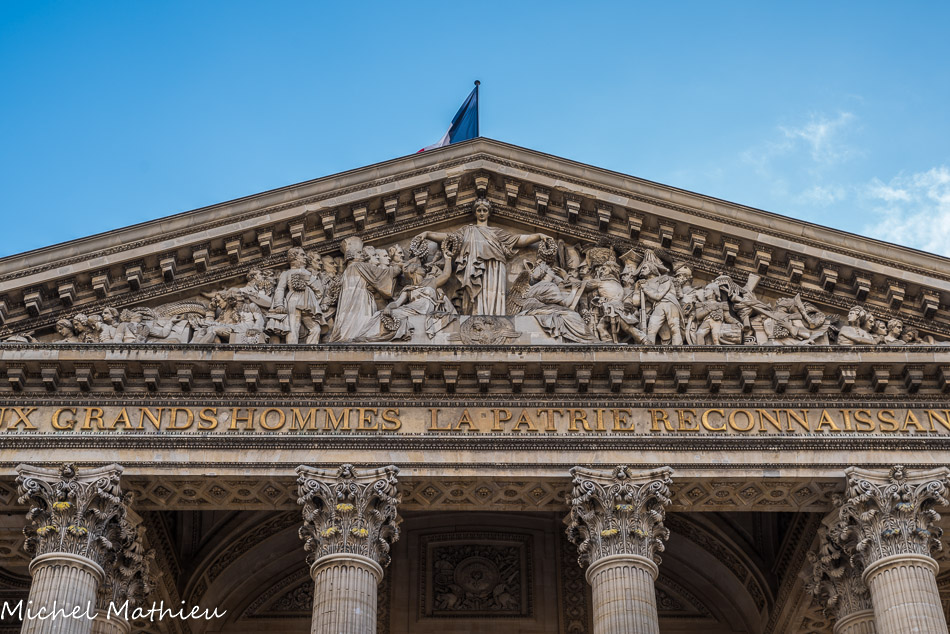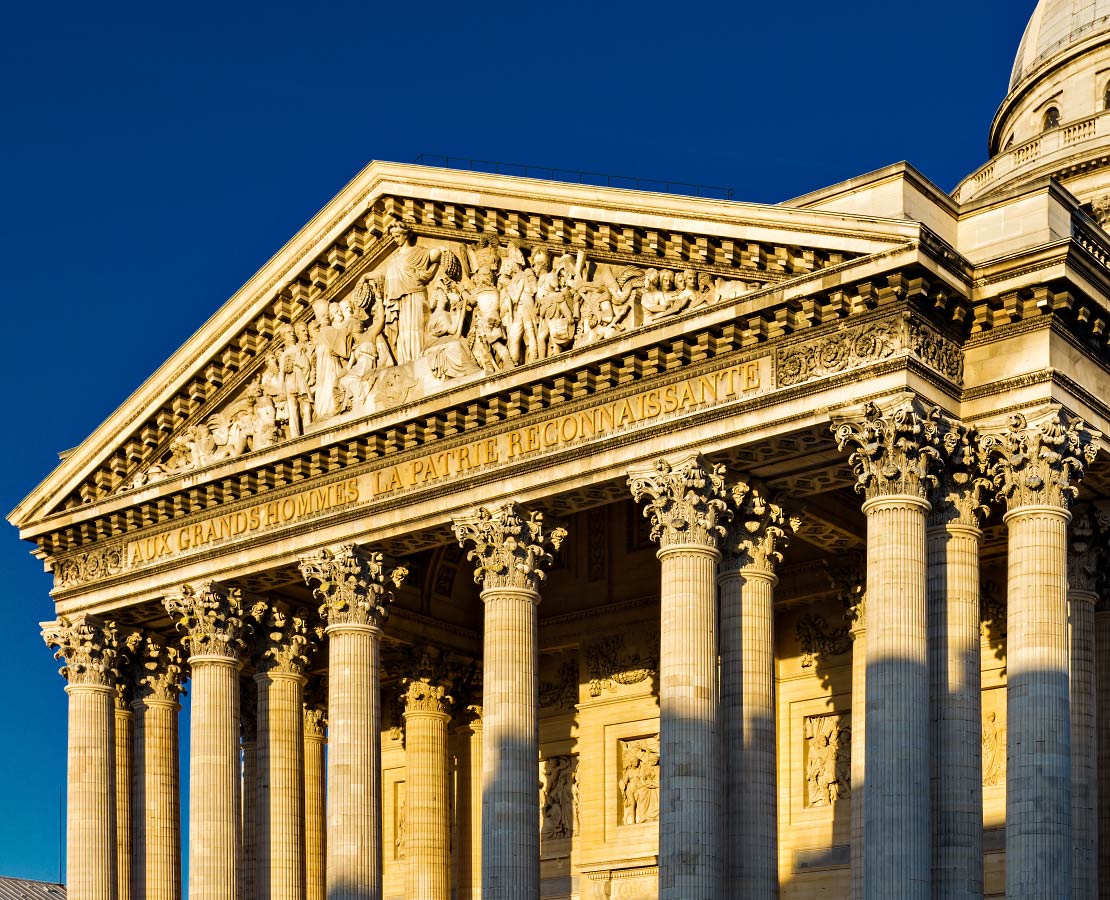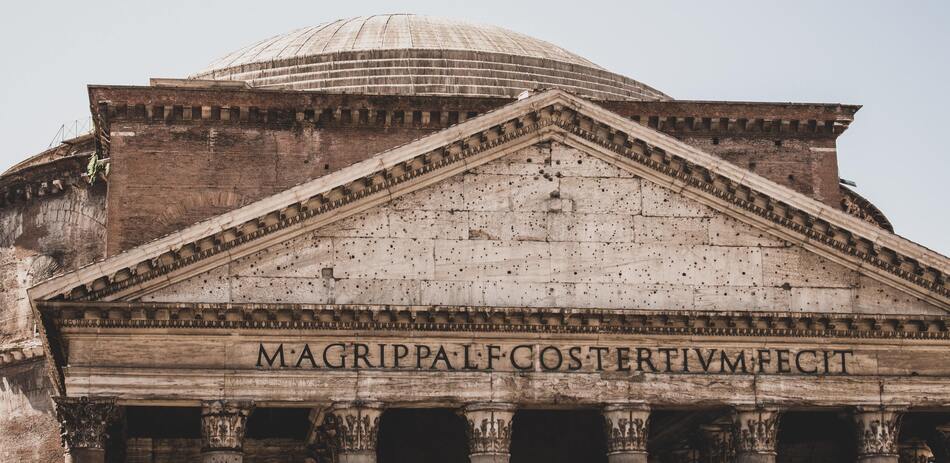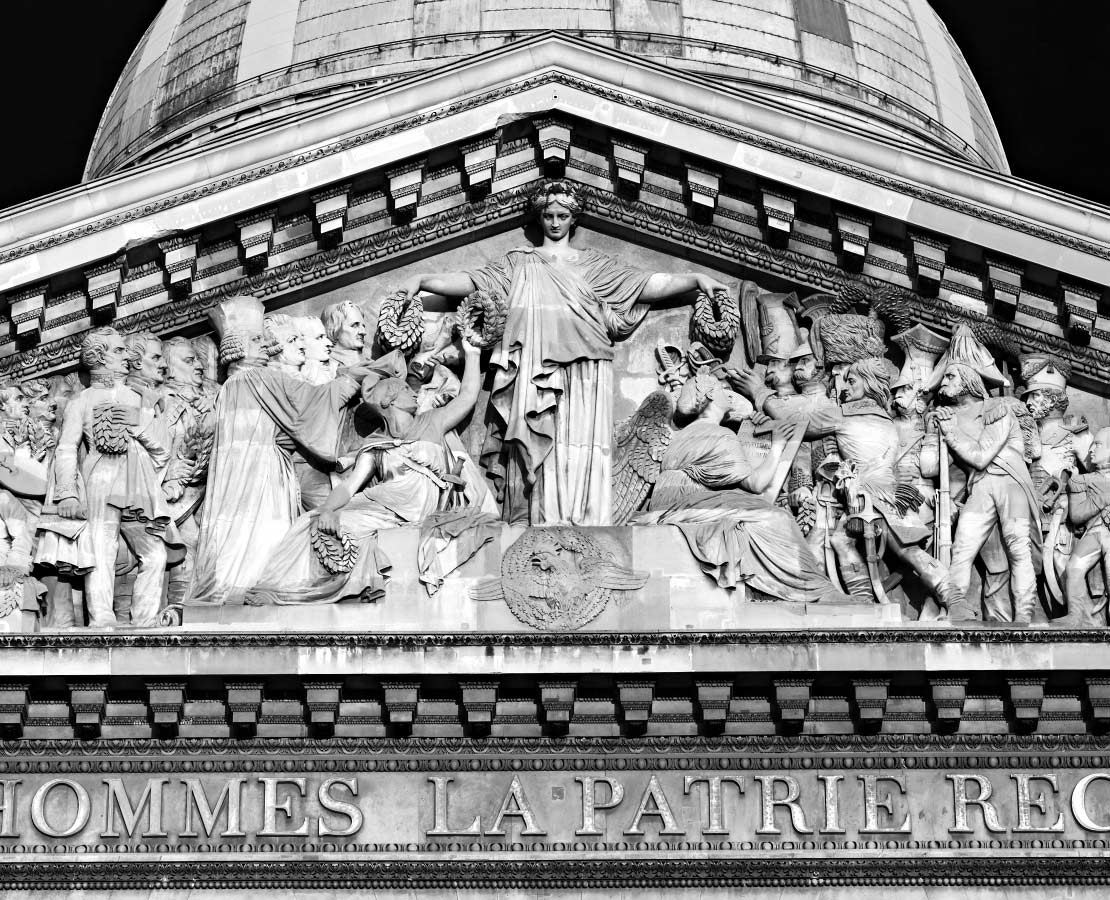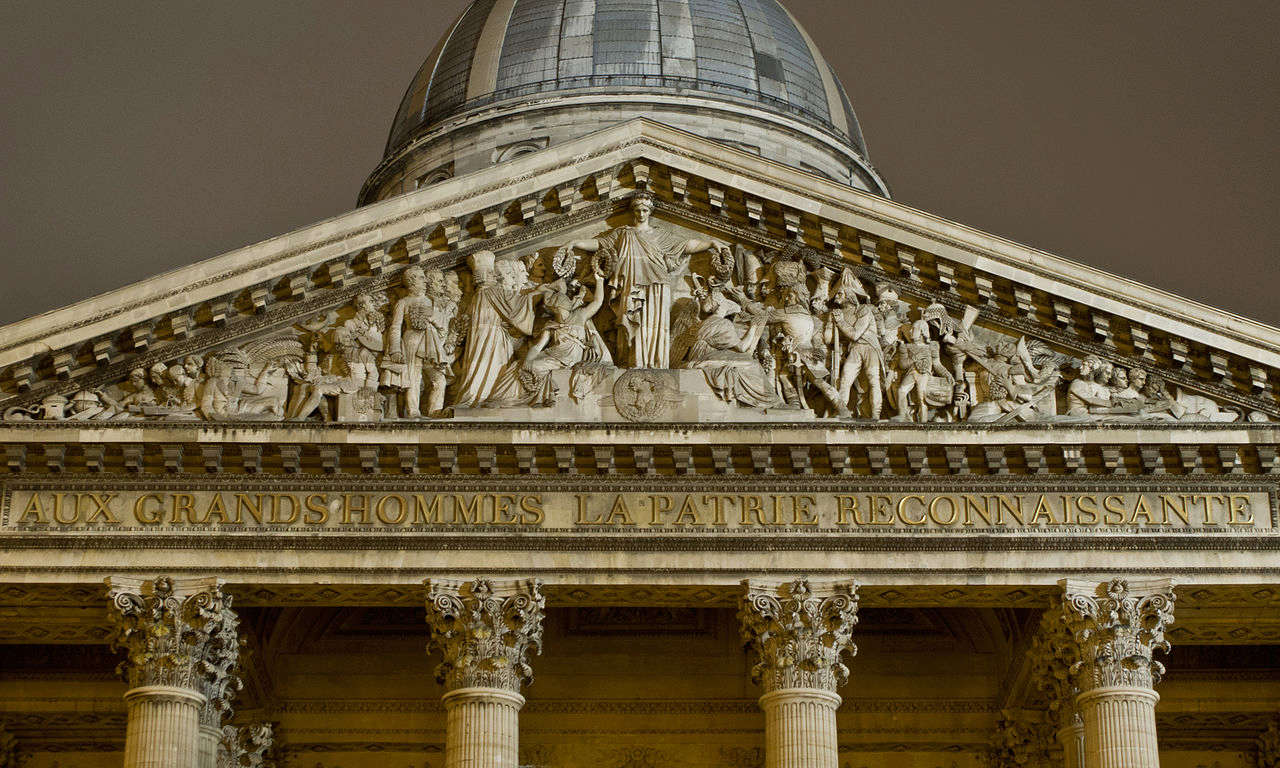Quelle Inscription Trouve T On Sur Le Fronton Du Panthéon

Okay, picture this: me, Paris, a ridiculously oversized croissant, and a slight sense of overwhelm because, let's face it, there's just *so much* history crammed into every single Parisian cobblestone. I was standing in front of the Panthéon, trying to look intellectual (key word: trying), when it hit me: what *exactly* does that inscription above the columns even say? My French, while passable, certainly wasn't cutting it from that distance. And let's be honest, craning your neck for five minutes straight gives you a neck ache worthy of Marie Antoinette herself.
So, naturally, I did what any self-respecting person in the 21st century would do: I whipped out my phone. And what I discovered wasn’t just a dry translation (who needs that?), but a whole little history lesson wrapped up in a few powerful words. Buckle up, because we're diving in!
The Inscription: The Core Message
Right, let's cut to the chase. The inscription that's practically screaming from the Panthéon’s façade is: AUX GRANDS HOMMES LA PATRIE RECONNAISSANTE. In English, that translates to "To great men, the grateful homeland." Simple, right? But like a perfectly crafted soufflé, there's more to it than meets the eye. (Anyone else suddenly craving French pastries? Just me? Okay then.)
Think about it: it’s not just a dedication; it’s a statement. It's an embodiment of French national pride and a celebration of the individuals who have shaped the nation’s identity. The *'grands hommes'* aren’t just famous; they’re deemed worthy of national gratitude. Big difference, huh?
Breaking it down: Each word matters
Let's dissect this inscription a bit further. It's like a linguistic onion – we'll peel back the layers, but hopefully, no tears will be involved.
- AUX: "To." A simple preposition, but crucial. It indicates a direction, a bestowal. It’s *to* these people, and no one else.
- GRANDS: "Great." This is where things get interesting. "Great" can be interpreted in different ways. Is it military prowess? Artistic genius? Scientific breakthrough? The beauty of it is its inherent ambiguity. It leaves room for interpretation, allowing the Panthéon to house a diverse range of figures, from Voltaire to Marie Curie. (Who would have thought philosophers and scientists could share a roof?)
- HOMMES: "Men." Okay, elephant in the room time. Let's be real, the original intention was definitely gendered. But, thankfully, that's changed! Now, the Panthéon celebrates *both* men and women. Still, the original inscription remains, a reminder of historical context and the evolving nature of societal values. The fact that the inscription still reads *hommes* while the Panthéon contains women is something worth pondering, isn’t it?
- LA PATRIE: "The Homeland." This isn't just any country; it's *La Patrie* – the French motherland. It evokes a sense of belonging, of shared history, and of national identity. It's the France with a capital F.
- RECONNAISSANTE: "Grateful." This is the key emotional component. France isn't just acknowledging these individuals; it's actively expressing gratitude. It's a public thank you note etched in stone.
The Panthéon: More Than Just a Building
The Panthéon itself is a pretty impressive building. Originally commissioned by Louis XV as a church dedicated to Saint Genevieve, the patron saint of Paris, it was later secularized during the French Revolution and transformed into a temple to honor distinguished French citizens. Talk about a plot twist!
It's been back and forth between religious and secular uses throughout history, which actually adds to its mystique. This shifting identity reflects the turbulent political landscape of France, with each regime reinterpreting the building's purpose to suit its own agenda. It is almost as if the building has a mind of its own.
Who's inside? A quick rundown of some famous faces
The Panthéon is like a VIP party for French historical figures. Here are just a few of the heavy hitters buried within its walls:
- Voltaire: The iconic Enlightenment philosopher and writer. His sharp wit and advocacy for freedom of speech made him a revolutionary figure. (Imagine him live-tweeting the French Revolution. Now that's content!)
- Jean-Jacques Rousseau: Another major Enlightenment thinker whose ideas on social contract theory influenced the French Revolution.
- Victor Hugo: The author of *Les Misérables* and *The Hunchback of Notre-Dame*. His writings championed social justice and human dignity.
- Émile Zola: A prominent writer and intellectual who played a key role in the Dreyfus Affair, a major political scandal that shook France.
- Marie Curie: A pioneering scientist and the first woman to be buried in the Panthéon based on her own merits. Her groundbreaking research on radioactivity revolutionized science.
- Alexandre Dumas: The author of The Three Musketeers and The Count of Monte Cristo. One for all, and all for the Panthéon!
And there are many more! Each individual represents a unique contribution to French culture, science, literature, or politics. The Panthéon is a testament to the diverse talents and achievements of the French nation.
The Inscription Today: Does it still hold up?
In a world that’s constantly changing, it's natural to question the relevance of historical monuments and their inscriptions. Does "To great men, the grateful homeland" still resonate in the 21st century? I think it does, but with some important caveats.
First, the inclusion of women in the Panthéon is a significant step towards gender equality. While the inscription itself remains unchanged, the presence of figures like Marie Curie and Simone Veil challenges the traditional, male-dominated narrative. It proves that greatness knows no gender. And let's be honest, it was about time!
Second, the definition of "greatness" is constantly evolving. In today's world, we recognize the importance of diversity, inclusivity, and social justice. The Panthéon must continue to evolve to reflect these values, honoring individuals who have made significant contributions to society in various fields. (Think activists, social reformers, and everyday heroes.)
Finally, it’s crucial to acknowledge the complexities of history. Some of the figures honored in the Panthéon may have held views or engaged in actions that are now considered problematic. It's important to engage in critical reflection and acknowledge the imperfections of the past. We need to remember and understand the flaws to keep growing as a society.
So, Next Time You're in Paris...
Next time you find yourself standing in front of the Panthéon, take a moment to appreciate the inscription. It's more than just a collection of words; it's a window into French history, culture, and identity. It’s a reminder of the power of gratitude, the importance of honoring those who have shaped our world, and the ongoing quest to define what it means to be "great."
And maybe grab a croissant while you're at it. Because, well, you're in Paris! Just don't drop any crumbs on the inscription, okay? 😉
And bon voyage!
